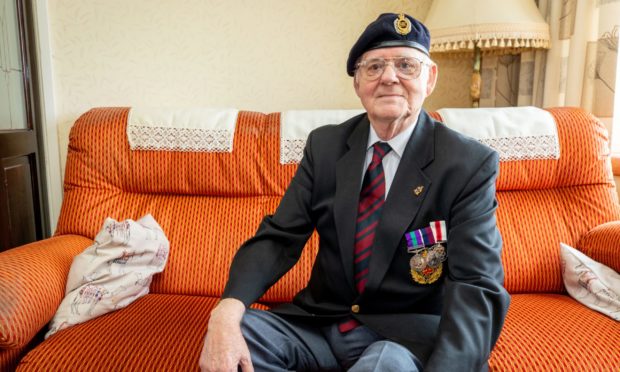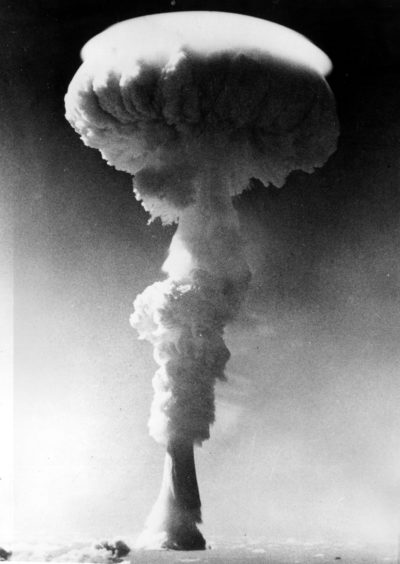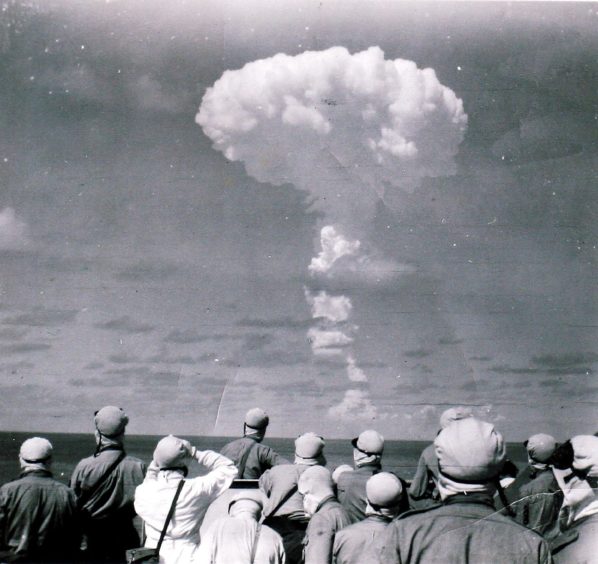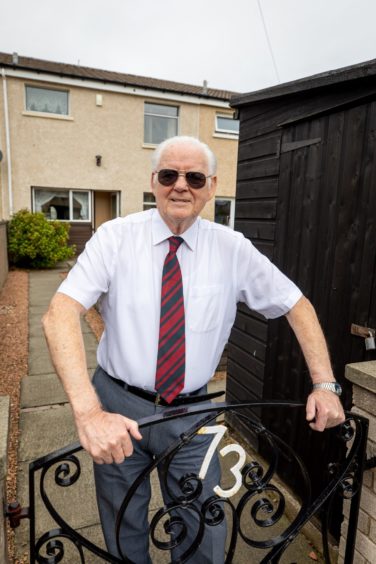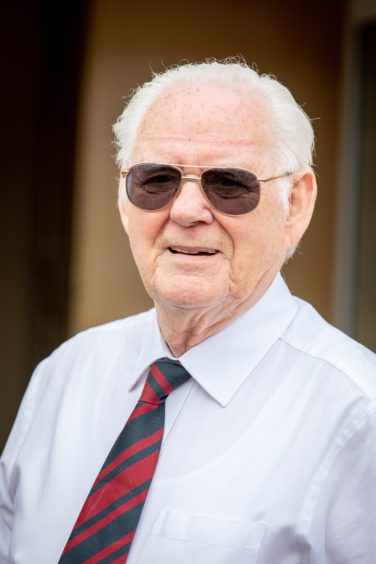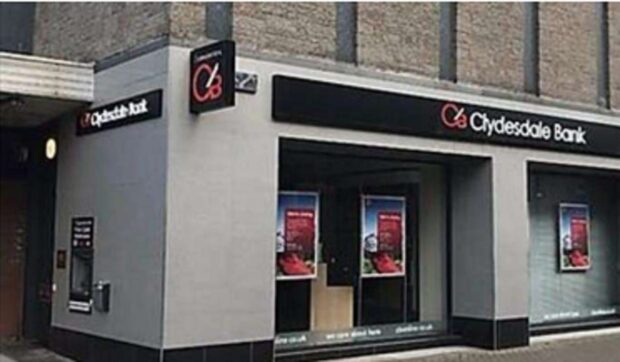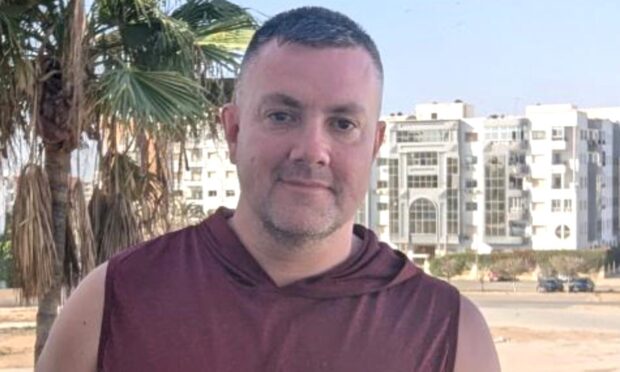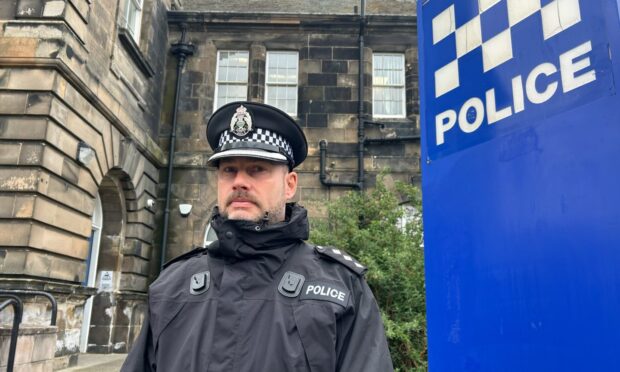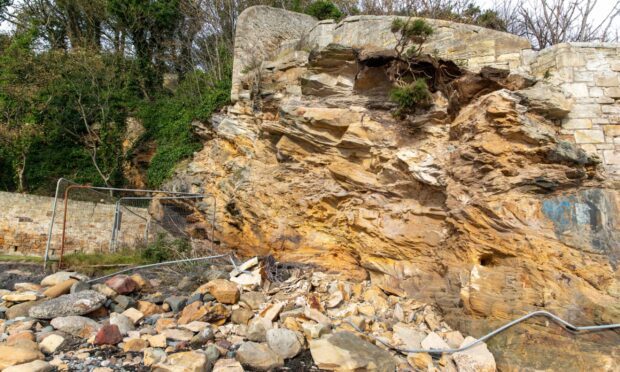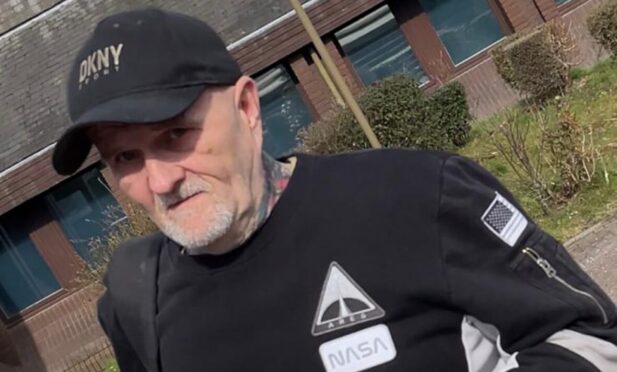A Fife pensioner who claims that he and thousands of other British servicemen were treated as human guinea pigs during the nuclear testing of the 1950s remains defiant after being told by the Ministry of Defence that any further correspondence from him will be treated as “vexatious”.
In the 19 years that Christmas Island veteran Dave Whyte from Kirkcaldy has been campaigning for “justice” for Britain’s nuclear test veterans, he has never held back with the language he has used to describe the Ministry of Defence’s perceived treatment of British soldiers.
The now 84-year-old has compared the nuclear tests with the “experiments of Nazi Doctor Joseph Mengele”, accused the MoD of treating soldiers as “guinea pigs” and made comparisons with the aftermath of “Chernobyl”.
He blames his exposure to the fallout from five atomic and hydrogen bomb blasts in 1958 for a catalogue of health problems he’s experienced over the years including the loss of all his teeth at 25 and the discovery in his mid-30s that he was sterile.
Despite numerous attempts at legal action against the MOD over the years, which, he admits have “hit every brick wall available”, the Ministry of Defence has said there is no valid evidence linking the nuclear tests to ill health.
Comprehensive response from MOD
Following his most recent letter to the MOD, however, Dave has received a reply from the Defence People Secretariat within the MOD which has made it clear that patience with him is wearing thin.
The letter from the Defence People Secretariat says: “The department has looked carefully at your most recent correspondence, as well as past correspondence, and I must advise that we have comprehensively and exhaustively responded to all the matters you have raised in our previous responses to you directly and most recently in our letter to your member of parliament, Mr Peter Grant MP, who made representations on your behalf on April 7, 2021.
“I regret there is nothing further or new that I can add to the previous correspondence that the Department has sent to you on this matter, and this position is unlikely to change.
“There is no further value in continuing this correspondence and I must advise that further correspondence from yourself on the subject of the UK nuclear atmospheric tests and the impact on nuclear test veterans will be considered vexatious.”
Writing back to the MOD, Dave, who was banned from making FOI requests to the MOD in 2016, said the MOD’s threats were “ill conceived” and accused them of being “discriminatory” and “cowardly” towards Britain’s nuclear test veterans.
He adds: “I will continue writing letters showing what really happened at the experimental nuclear test sites, whilst explaining the incredulous reports written by your department.”
REFUSING TO GIVE UP
Born and raised in Montrose before a spell living in Edinburgh and Germany where his sergeant major father served with the Royal Artillery, Dave Whyte was 22-years-old and serving with the Royal Engineers when he was sent to Christmas Island in the South Pacific in 1958.
The Cold War was at its height and Mr Whyte was stationed there, off the north-eastern coast of Australia, to assist with British nuclear tests.
His job was to collect samples afterwards.
At the time the stakes were high. Amid real fears that the Cold War could escalate into open warfare with the USSR, Britain was determined that it should have its own nuclear deterrent.
In all, Britain and the USA caused some 40 nuclear test explosions in the Pacific region between 1952 and 1962.
Something like 21,000 British servicemen were exposed to these explosions.
But little did Dave and his colleagues realise that in years to come, some would suffer ill health and in some cases premature death.
Some would suffer from rare forms of leukaemia.
Others reported congenital deformities in their children with a disproportionate number of stillbirths.
“I was at Grapple Y – the largest hydrogen bomb exploded by Britain,” Dave said previously.
“For that one I was 35 miles away at main camp.
“But then we had the series of four bombs called Grapple Z.
“I was exposed to the whole lot. At Grapple Z, there were two bombs I was really committed to as I was working in the forward area, just seven miles from ground zero. That was both atomic bombs Pennant and Burgee on August 22 and September 23 1958.
“My task was to go in and pick up all the radioactive debris, load them into my truck and take them to the decontamination centre.
“I had no protection whatsoever. The only people who had protection on Christmas Island were civilian AWREs – Atomic Weapons Research Establishment people.”
Told to cover eyes
Dave says when the bomb went off, they were told to turn their backs and cover their eyes before turning round to see the “mushroom” cloud.
“It was then we were hit by the blast,” he says. “We were hit by the heatwave and the light when the bomb went off. Afterwards when we were watching it, we were hit by the sound and then the wind came.”
Dave said neither he nor his colleagues knew of the dangers of radiation at the time. They just did what they were told.
Even when he left the forces and had to have all his teeth removed after developing abscesses, he didn’t link it with exposure.
Ten years later, however, when a fertility test confirmed he couldn’t have children, he made the connection.
While difficult to prove and not applying to everyone, he started to hear stories of others with similar health problems – getting involved in serious campaigning in 2002 when he retired aged 65 after 12 years in the RAF, 17 years with the prison service and five years on Fife Council security.
Studies
Dave wants to prove that he was exposed to more radiation than his records say he was exposed to and that there were health consequences.
A study undertaken by Sue Rabbitt Roff, a social scientist at Dundee University in 1999, found that of 2,261 children born to veterans, 39% were born with serious medical conditions.
By contrast, the national incidence figure in Britain is around 2.5%.
However, the MoD has insisted it cannot find Mr Whyte’s full set of records of his radiation exposure.
“I want them to apologise to all the nuclear veterans for using us as experiments,” Dave says.
“I still maintain that they wanted to find out the level of radiation that a person could survive the nuclear bombs with.
“My records say I was exposed to 2.4 millisieverts for my whole tour – five bombs.
“But I know for a fact it states the radiation levels at ground zero 1.5 hours after bomb for Pennant was one roentgen which is the equivalent to 10 millisieverts. That’s four times greater than they gave me for my entire tour. I have that proof but they are not prepared to listen to it.”
Conscientious efforts by MOD
The British Nuclear Test Veterans’ Association (BNTVA) charity has been campaigning on the issue for decades.
The courts have, however, paid tribute to the MoD’s “conscientious” efforts to assist Mr Whyte in recent years and, while unable to discuss individual cases, the MoD says it recognises the “debt of gratitude we have to the servicemen who took part in the nuclear tests”.
